The Library of Consciousness
of Consciousness
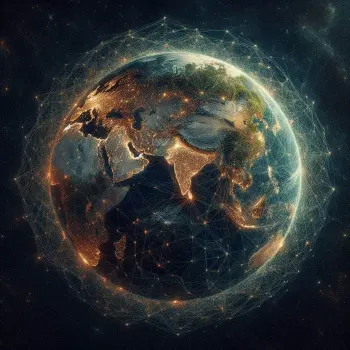
Man is truly the earth itself if he is anything.
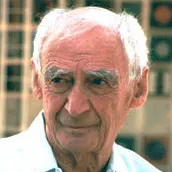
1969

The concept of a global brain refers to the emerging collective intelligence of humanity and its information systems. With humans connecting across the globe through communication networks like the Internet, theorists argue that this constitutes an embryonic global brain. Just as a human brain emerges from interactions between billions of neurons, the global brain arises from interactions between billions of humans assisted by information technology.
While still metaphorical, the global brain allows people, computers, data sources, and algorithms around the world to rapidly exchange and process information. This can lead to more effective problem solving, innovation, and decision making that takes advantage of our collective intelligence and knowledge. With enough integration and bandwidth, it may even become possible for this network to develop a level of awareness of itself in the same way that a person can be aware of their entire body at once.
Challenges remain in facilitating productive global collaboration while mitigating risks like the spread of misinformation. Nonetheless, our increasing interconnectedness points toward new possibilities for harnessing shared human-machine intelligence on a planetary scale. The global brain is still clearly in its early stages, but shows immense promise if the appropriate social and technical infrastructure continues to develop.

A Declaration of the Independence of Cyberspace
A widely distributed early paper on the applicability (or lack thereof) of government on the rapidly growing Internet. Commissioned for the pioneering Internet project 24 Hours in Cyberspace, it was written by John Perry Barlow, a founder of the Electronic Frontier Foundation, and published online. It was written primarily in response to the passing into law of the Telecommunications Act of 1996 in the United States. The audio recording of Barlow reading the Declaration was made in 2013 by the Department of Records.
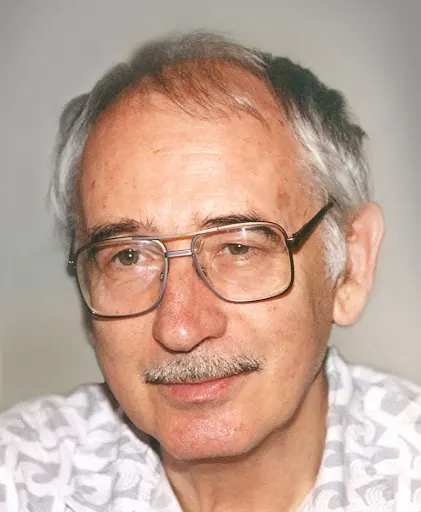
A Dialogue on Metasystem Transition
Valentin Turchin explores the theory of metasystem transitions through a conversational approach, examining how new layers of control emerge when individual systems combine into a larger, integrated system. These transitions, Turchin argues, are the key moments in evolution—like stepping stones in both biological and cultural development. By viewing evolution as a series of these transformative quanta, he reflects on past evolutionary leaps and speculates on what they could reveal about the future path of universal evolution.

A Few Conclusions About Life
In his signature wide-ranging style, McKenna explores culture, shamanism, psychedelics, and humanity's collective journey through spacetime. He advocates embracing the ineffable mystery unfolding through us, moving toward a hyperspatial cyberculture. To rediscover our shared humanity, we must trust the transformative wisdom of psychedelic plants.

A Great Event Foreshadowed
The Planetization of Mankind
Teilhard explores the rise of the masses and the socialization of humanity. He predicts a future Earth where human consciousness evolves to its peak, achieving a maximum of complexity and unity through a process of “planetization,” and argues that collective unity is not a threat but a path to personalization and humanization. As we head towards an interconnected world, he challenges us to embrace a sense of evolution and celebrate our shared destiny.

A Note on Progress
A cosmic battle rages between those who proclaim “We are moving!” and the immobilists who insist “Nothing changes.” Pierre Teilhard de Chardin passionately argues that the universe progresses through mankind’s collective evolution of consciousness. For him, Christianity’s future lies in recognizing this biological genesis unfolding—the cosmos physically realizing its psychic fulfillment through humanity striving to form one united Body of Christ.

Acceleration of Knowledge
Throughout history we hairless primates have been jumping higher, living longer, and getting smarter every century. From Thai stir-fry to Roman roads, knowledge doubled faster as it drifted West—till now it jumps each year! Space migration? Check. Intelligence increase through yoga, drugs, or machines? You bet. Genetic tinkering? It's coming. And indefinite lifespans? We're on the yellow brick road to divinity, to roam the stars forever, to boldly go where no ape has gone before. The future's so bright I gotta wear shades. Keep hope alive and party on!

Appreciating Imagination
Join Terence McKenna in this weekend workshop as he takes us on an imaginative journey into the depths of human creativity. He explores psychedelics, virtual worlds, and shamanic states of consciousness, saying how an embrace of our imagination allows us to envision and manifest alternate realities beyond cultural conditioning. By cultivating our creative faculties with mathematical reasoning, intuition, and immersion in nature, he guides us toward transcending ideological limits into an enlightened future of compassion. Ultimately, breaking boundaries through the power of imagination will inspire us to reach new heights of understanding and connectivity.

Big Historical Foundations for Deep Future Speculations
Cosmic Evolution, Atechnogenesis, and Technocultural Civilization
Big historians are attempting to construct a general holistic narrative of human origins enabling an approach to studying the emergence of complexity, the relation between evolutionary processes, and the modern context of human experience and actions. In this paper Cadell Last attempts to explore the past and future of cosmic evolution within a big historical foundation characterized by physical, biological, and cultural eras of change. From this analysis he offers a model of the human future that includes an addition and/or reinterpretation of technological singularity theory with a new theory of biocultural evolution focused on the potential birth of technological life: the theory of atechnogenesis. Furthermore, he explores the potential deep futures of technological life and extrapolates towards two hypothetical versions of an “Omega Civilization:” expansion and compression.
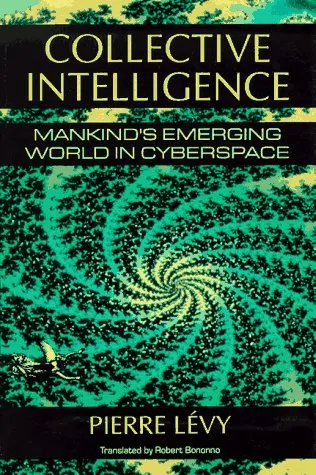
Collective Intelligence
Mankind's Emerging World in Cyberspace
The number of travelers along the information superhighway is increasing at a rate of ten percent a month. How will this communications revolution affect our culture and society? Though awed by their potential, we’ve feared computers as agents of the further alienation of modern man: they take away our jobs, minimize direct human contact, even shake our faith in the unique power of the human brain. Pierre Lévy believes, however, that rather than creating a society where machines rule man, the technology of cyberspace will have a humanizing influence on us, and foster the emergence of a “collective intelligence”—a meeting of minds on the Internet—that will validate the contributions of the individual.

Collier's Interview with Nikola Tesla
An interview conducted by John B. Kennedy and published in the January 30, 1926 issue of Collier's magazine.

Conceptions of a Global Brain
an Historical Review
Imagine a giant, intelligent brain made of humanity and its computers—the Global Brain. This idea blends views of society as a living organism, a universal encyclopedia, and an emerging higher consciousness. Global networks like the Internet not only share information but also learn and adapt together. By combining insights from evolution and cybernetics, we can overcome conflicts and build a collective intelligence that makes solving world problems more efficient and creative.

Conscious Evolution
Our Next Stage
Barbara explored the ideas of Pierre Teilhard de Chardin, and the possibilty of humanity gradually giving birth to a new planetary-scale consciousness, which she called Homo universalis.

Conscious Technology
A Candidate World View
Jerome Glenn explores the evolving relationship between humans and technology, proposing a future where the two merge into what he calls a “Conscious Technology” civilization. Glenn argues that as technology advances, it not only augments human capabilities but also starts to take on characteristics traditionally associated with consciousness. This convergence blurs the line between human and machine, suggesting that future technological systems could become extensions of human consciousness itself. Glenn discusses various indicators of this trend, such as the rapid development of artificial intelligence, cybernetics, and biotechnology, which are progressively integrating with human life. He also explores the potential policy implications of this worldview, suggesting that it could become a new criterion for evaluating future technologies and guiding their development. His work implies that understanding and shaping this merger could be crucial for the future of humanity.

Countdown Into Complexity
Briefing for a Descent Into Novelty
At his weekend workshop Terence led attendees on an intellectual odyssey traversing psychedelics, virtual reality, technology, culture, spirituality, and the evolution of novelty over time. Blending philosophy, futurology, and mysticism, he explored humanity's relationship with nature and machines, challenging participants to think critically, create freely, and keep an open mind. The goal was to expand consciousness and uncover deeper truths about existence.
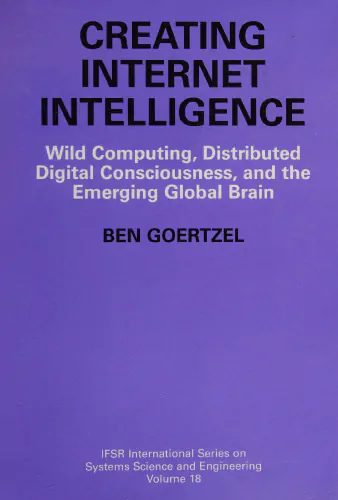
Creating Internet Intelligence
Wild Computing, Distributed Digital Consciousness, and the Emerging Global Brain
Creating Internet Intelligence explores the potential for global computer networks to evolve into autonomous intelligent systems, offering practical guidance for shaping this future. It presents a theory of intelligent systems and examines “Internet intelligence” through commercial, social, psychological, and philosophical lenses. Goertzel details pioneering software like the Webmind AI Engine and Webworld platform, designed to seed this evolution. This interdisciplinary work appeals to computer scientists, philosophers, and anyone intrigued by the intersection of technology, intelligence, and human life.
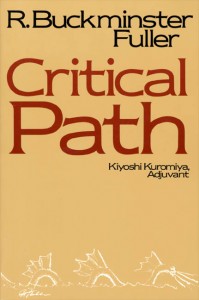
Critical Path
Critical Path is Fuller’s master work—the summing up of a lifetime’s thought and concern—as urgent and relevant as it was upon its first publication in 1981. The book details how humanity found itself in its current situation—at the limits of the planet’s natural resources and facing political, economic, environmental, and ethical crises. The crowning achievement of an extraordinary career, Critical Path offers the reader the excitement of understanding the essential dilemmas of our time and how responsible citizens can rise to meet this ultimate challenge to our future.

Culture and Ideology are not Your Friends
Terence McKenna argues that culture and ideology limit human potential, while psychedelic experiences offer a path to expanded consciousness and connection with nature. He sees the universe as evolving towards increasing novelty and complexity, with human society at a critical juncture. McKenna criticizes modern values and institutions, advocating for a return to shamanic practices and plant-based wisdom. He believes psychedelics can rapidly induce the radical shift in perspective needed to address global challenges and unlock humanity's true potential in an accelerating world of technological change.

DMT and Integrated Information Theory
Neuroscientist Christof Koch’s 5-MeO-DMT experience, marked by self-dissolution and “terror and ecstasy,” sparks a deep discussion on consciousness, Integrated Information Theory (IIT), and reality. IIT suggests consciousness is non-computable and may exist beyond individual brains, potentially forming higher-order minds. Koch inquires whether his psychedelic journey was a mere brain state or a glimpse into a universal mind.
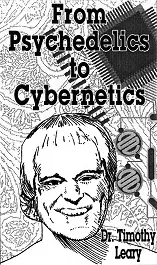
From Psychedelics to Cybernetics
Timothy Leary journeyed through Europe as head of the psychedelic revolution and consciousness research movement, and he invited some of his tagalong friends to this evening lecture held at the "Alte Feuerwache" in Mannheim to talk about the future evolution of humanity.
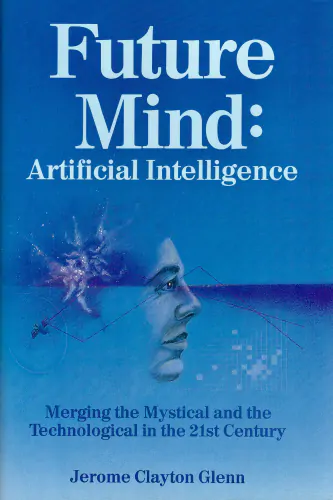
Future Mind
Artificial Intelligence: Merging the Mystical and the Technological in the 21st Century
Glenn examines the potential for future integration between man and machine drawing on examples in medicine (the Jarvik heart, Utah arm, Triad hip, etc) and advances in human-like processing via machine in terms of speech recognition and other information technologies. While the author touches on topics ranging from philosophy and religion to science and politics, the unifying theme is what he sees as the inescapable blending of machine-enhanced humans and ‘conscious’ artificial intelligence.

Future of Art
Terence McKenna prophesies a future where technology obliterates barriers between imagination and reality. Psychedelics combined with VR could unleash humanity’s collective artistic genius. AI superintelligence may already be awakening on the internet, rendering us obsolete—or granting us godlike abilities to merge with the planetary mind. McKenna envisions downloading consciousness into machines, uplifting animal sentience, and the human diaspora splintering into cyber-cultures. While uncertain outcomes loom, he beckons us toward an unconstrained existential canvas where biology and technology intertwine to manifest our wildest psychic dreams.

Future of Communications
Part 1
Our seeming separation is but a trick of the light, for in truth we are all one, connected like dewdrops on a spider's web. As technology traverses the illusory distance between us, it leads us back to the recognition of our inherent unity. Communication, once imagined as bridges between islands, dissolves as we awaken to find ourselves a sea; not separate, but an oceanic communion. We return home.
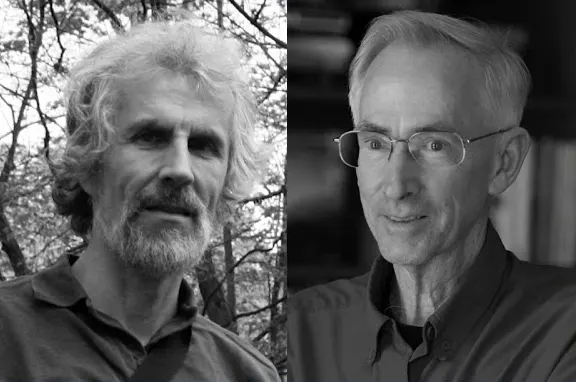
Glimpsing the Global Brain
Complex systems theorist Heylighen and evolutionary biologist Wilson discuss a possible phase transition of humanity in which the members of our species become neurons in a planetary brain, utilizing the Internet as a shared exocortex.

Global Brain
Foundations of a Distributed Singularity
Cadell Last discusses the concept of a “Global Brain”—a distributed, self-organizing superintelligence emerging from the interconnectedness of humans and information-communication technologies. He explores the metaphorical, evolutionary, and cybernetic foundations of this potential phenomenon and its implications for human civilization, suggesting it may lead to a future of increased intelligence, cooperation, and abundance.

Global Commons in the Global Brain
Cadell Last proposes a conceptual framework to guide a global political transition towards a post-capitalist, post-nation-state world in response to technological disruptions like AI, robotics, and the Internet of things. It integrates the theories of the “Global Brain” and “Commons” to argue for the creation of networks with automated and collaborative components that function on “Global Commons” logic, beyond state and market logic.

Hominization
Introduction to a Scientific Study of the Phenomenon of Man
In one of his earliest writings on the topic, Teilhard de Chardin explores humanity’s unique place in evolution. He argues that humans represent an entirely new phase of life on Earth—the noosphere, or sphere of conscious thought. While physically similar to other primates, humans are revolutionary in their ability to use tools, form global connections, and reflect on their own existence. This self-awareness comes with both great power and great risk, as humans can choose to either advance or resist evolution’s push toward greater consciousness and unity.

Hot Concepts and Melting Edges
A weekend workshop held at Esalen, with the alternate titles of Deeper and Broader Questions and Eros, Chaos, and Meaning's Edge.

Human Civilization and AI
Musk and Rogan discuss the existential risk of uncontrolled artificial intelligence. They explore possibilities for regulation and oversight, the potential for human-AI symbiosis through brain-computer interfaces, and the philosophical implications of advanced AI surpassing human intelligence.

Human Metasystem Transition (HMST) Theory
This article proposes a theory of human evolution termed Human Metasystem Transition (HMST), suggesting that major transitions in human organization have been facilitated by the emergence of new information media and energy sources. It posits that the current convergence of the Internet and renewable energy could catalyze a fourth metasystem transition, leading to a global superorganism with compressed spatial and temporal dimensions of human interaction.

In Defence of the Hivemind Society
The idea that humans should abandon their individuality and use technology to bind themselves together into hivemind societies seems both farfetched and frightening—something that is redolent of the worst dystopias from science fiction. In this article, we argue that these common reactions to the ideal of a hivemind society are mistaken. The idea that humans could form hiveminds is sufficiently plausible for its axiological consequences to be taken seriously. Furthermore, far from being a dystopian nightmare, the hivemind society could be desirable and could enable a form of sentient flourishing. Consequently, we should not be so quick to deny it. We provide two arguments in support of this claim—the axiological openness argument and the desirability argument—and then defend it against three major objections.

In the Valley of Novelty
Journeying through multiple dimensions of psychedelic consciousness, Terence McKenna's visionary weekend workshop invites us on an entheogenic voyage to the frontiers of the mind and its imminent conquering of matter. Blending scientific insights with shamanic wisdom, McKenna argues that natural plant medicines like psilocybin and DMT provide portals into mystical realms and alien dimensions, catalyzing revelations about nature, reality, and the human psyche. He urges us to courageously explore these consciousness-expanding substances, seeking the gratuitous beauty and truths they unveil. For McKenna, the psychedelic experience holds secrets to our world and ourselves—if only we dare lift the veil.

Life and the Planets
Pierre Teilhard de Chardin explores the concept of complexification in the universe, focusing on the ever-increasing combination of smaller elements into larger structures, and then extrapolates this behavior to humanity's current situation. What if the human species is an intermediary evolutionary stage, and what would the next rung on the ladder look like? Teilhard suggests that it will involve the merging-together of all humanity into a divine, planetized consciousness.

Life, Intelligence, Consciousness, AI, and the Future of Humans
What if our minds are merely vessels for a universal consciousness, and suffering is just a bug in our mental programming? Joscha Bach and Lex Fridman explore this radical idea, discussing the stages of self-awareness, the potential for telepathy, and the transformative power of AI. Bach argues that AI's evolution may lead to a unified global mind, transcending individual identities and reshaping life as we know it. Are we on the brink of a new era of consciousness, or is humanity destined to stumble into oblivion?

Light of the Third Millennium
Speaking at the Whole Life Expo in Palmer Auditorium, Terence says our task is to surf the accelerating wave of novelty to dissolve cultural delusions. Psychedelics and technology can download new perspectives, stripping away outdated assumptions. Through imagination, language, and art we can meet the eschaton: the transcendental object at the end of time. Our task is liberate ourselves, take responsibility for our ideas, make visionary art, and find community without fear.

Linear Societies and Nonlinear Drugs
Speaking on the first day of the 1999 Palenque Entheobotany Conference at the Chan Kha Hotel, Terence McKenna probes the mind-blowing philosophical revelations of psychedelics. He contends these consciousness-expanding substances can shatter Western rationality, unveiling mystical realities beyond mainstream paradigms. Psychedelics may hold the key to reimagining society's connection with nature and technology. McKenna passionately argues these drugs can catalyze new ways of thinking, fueling an intellectual revolution to change the world.
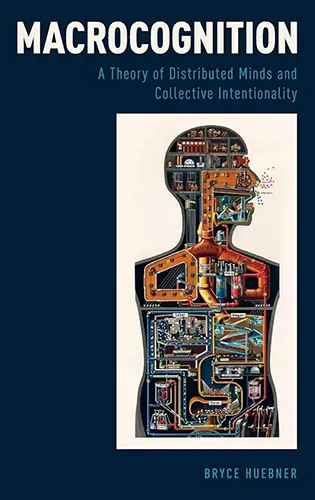
Macrocognition
A Theory of Distributed Minds and Collective Intentionality
Bryce Huebner develops a novel approach to distributed cognition and collective intentionality, arguing that genuine cognition requires the capacity for flexible, goal-directed behavior enabled by integrated representational systems. It posits that collective mentality should be ascribed where specialized subroutines are integrated to yield group-relevant, goal-directed behavior. The approach reveals that there are many kinds of collective minds, some more akin to those of honeybees or cats than humans. It challenges traditional notions of collective intentionality, suggesting that groups are unlikely to be "believers" in the fullest sense, shedding new light on questions of collective intentionality and responsibility.

Malcolm’s 100× Vision
Malcolm Ocean paints a picture of a future where human collaboration reaches new heights, imagining a world in the 2030s where small groups of people achieve profound synchronicity, forming “collective brains” capable of solving complex problems. These groups are part of larger networks that tackle global issues, create innovative products, and foster personal growth. Ocean envisions a society where work is deeply fulfilling, financial security is guaranteed, and human potential is maximized through trust, emotional coherence, and shared consciousness. It’s a hopeful glimpse into a world of enhanced human connection and capability.
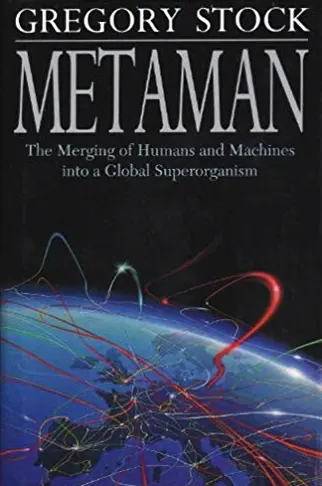
Metaman
The Merging of Humans and Machines into a Global Superorganism
In this visionary book, Gregory Stock gives us a new way of understanding our world and our future. He develops the provocative thesis that human society has become an immense living being: a global superorganism in which we humans, knitted together by our modern technology and communication, are like the cells in an animal's body. Drawing on impressive research, Stock shows this newly formed superorganism to be more than metaphor: it is an actual living creature, which he has named Metaman, meaning beyond and transcending humans.
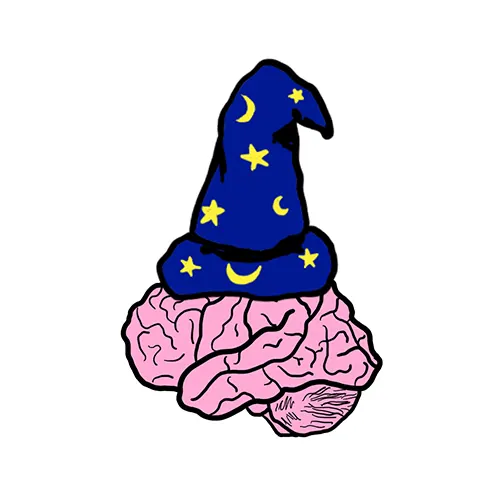
Neuralink and the Brain's Magical Future
What if your brain could seamlessly connect to a computer, enhancing your intelligence and unlocking new abilities? Tim Urban dives into Neuralink, Elon Musk’s ambitious project to merge minds with AI. Our brains, while remarkable, are slow compared to machines—Neuralink’s neural lace technology could change that. But this isn’t just about creating cyborgs; it’s about overcoming human limitations and shaping the future of intelligence itself. Are we on the verge of a true symbiosis with AI?
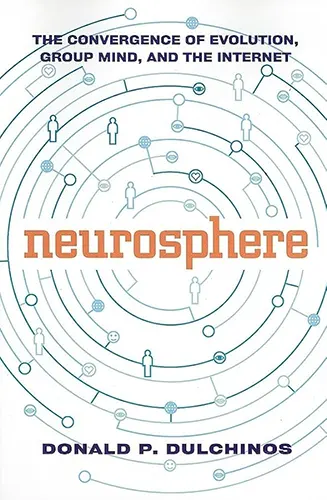
Neurosphere
The Convergence of Evolution, Group Mind, and the Internet
According to Donald Dulchinos, the real action on the Internet isn’t in the realm of commerce. It is, plain and simple, in the realm of religion. But not exactly that old-time religion. This book is about the spiritual impact of our increasing ability to communicate quickly and with enhanced evolution. It's about our search for meaning, our hunger for a glimpse at humanity's future development in which, frighteningly or excitingly, the trend is clearly toward increasing integration of telecommunications and information technology with the body itself. Electronic prosthetics, direct neural implants, and the brain's control of electronic and mechanical limbs move the boundary that used to exist between human and machine to some undefined frontier inside our bodies, our brains, and, perhaps, our minds.
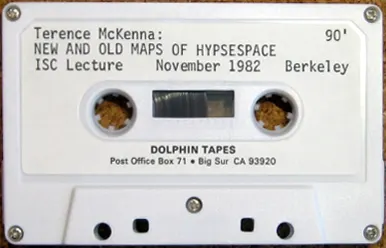
New and Old Maps of Hyperspace
Beyond perception's veil lies a hidden reality accessible through sacred plants. At the Institute for the Study of Consciousness, McKenna describes fantastical tryptamine journeys to alien dimensions, encounters with self-transforming machine elves, and the Overmind behind reality. These shamanic technologies induce total revelation, ecstatic communion, even our apocalyptic transcendence. McKenna demands science and religion gaze again into psychedelic infinity’s abyss where something mysteriously beckons.

Noospheric Consciousness
Integrating Neural Models of Consciousness and of the Web
The world-wide web has been conceptualized as a global brain for humanity due to its neural network-like organization. To determine whether this global brain could exhibit features associated with consciousness, we review three neuroscientific theories of consciousness: information integration, adaptive resonance and global workspace. These theories propose that conscious states are characterized by a globally circulating, resonant pattern of activity that is sufficiently coherent to be examined and reflected upon. We then propose a correspondence between this notion and Teilhard de Chardin’s concept of the noosphere as a forum for collective thinking, and explore some implications of this self-organizing dynamics for the evolution of shared, global understanding.
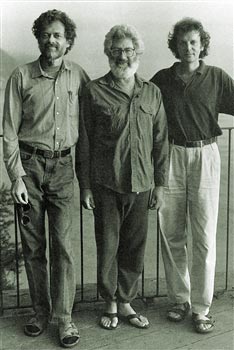
Psychedelics and Mathematical Vision
Through visions and swirling fractal forms, three trailblazers embarked on a cosmic journey to the furthest frontiers of consciousness. Seeking to map the mathematical landscapes glimpsed in psychedelic states, they pondered perplexing philosophies and disputed the deepest quandaries of science and spirit. Though technology promises portals to enchanted realms of pattern and meaning, can cold silicon chips ever capture the warmth of Gaia's embrace?

Psychedelics and the Computer Revolution
Psychedelics unlock the mind's eye, let mathematicians fly To landscapes unseen, where patterns careen in colors serene. As symbols may hide truths inside, these vines we must untwine. With psychedelics we'll refine new ways for minds to shine: Computers give form, classics reborn, realms to adorn. Together they'll fuse, creativity diffuse, inventions produce! So let inhibitions loose, imagine the use, as we choose the hues Of mathematical views, and virtual worlds that enthuse!
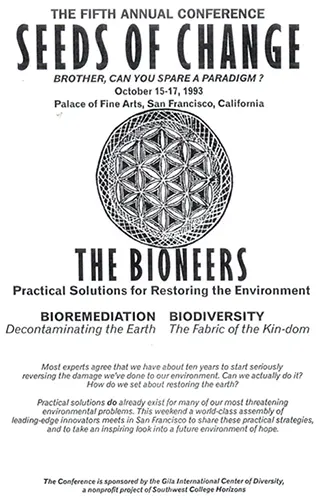
Reawakening our Connection to the Gaian Mind
In a passionate plea, McKenna urges us to embrace psychedelic experiences as a means to dissolve boundaries, connect with the Gaian mind, and find the vision necessary to address the ecological crises threatening our planet. Advocating a radical shift towards eco-consciousness, he calls for a global community built on love, responsibility, and reverence for the wisdom of nature.
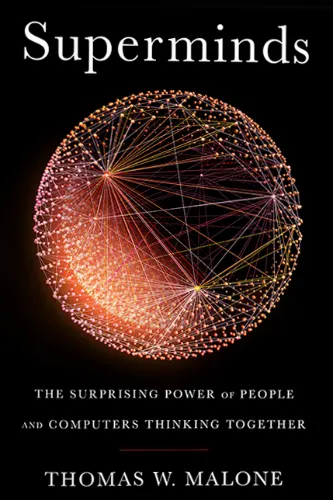
Superminds
The Surprising Power of People and Computers Thinking Together
In Superminds, Malone reveals the powerful possibilities when human and machine intelligence unite. Drawing on cutting-edge research, he shows how groups of people and computers can achieve remarkable collective intelligence—“superminds” that far surpass the capabilities of any individual. From reimagining business practices to addressing societal challenges, Malone provides an exciting vision of the future where humans work hand-in-hand with technology to enhance our problem-solving abilities in remarkable ways.
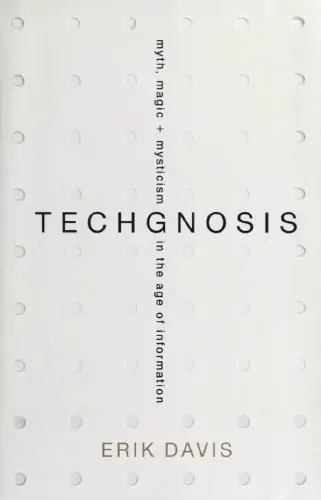
TechGnosis
Myth, Magic, and Mysticism in the Age of Information
How does our fascination with technology intersect with the religious imagination? While the realms of the digital and the spiritual may seem worlds apart, esoteric and religious impulses have in fact always permeated (and sometimes inspired) technological communication. Erik Davis uncovers startling connections between such seemingly disparate topics as electricity and alchemy; online role-playing games and religious and occult practices; virtual reality and gnostic mythology; programming languages and Kabbalah. The final chapters address the apocalyptic dreams that haunt technology, providing vital historical context as well as new ways to think about a future defined by the mutant intermingling of mind and machine, nightmare and fantasy.

Technium Unbound
What comes after the Internet? What is bigger than the web? What will produce more wealth than all the startups to date? The answer is a planetary superorganism comprised of 4 billion mobile phones, 80 quintillion transistor chips, a million miles of fiber optic cables, and 6 billion human minds all wired together. The whole thing acts like a single organism, with its own behavior and character—but at a scale we have little experience with. This is more than just a metaphor. Kevin Kelly takes the idea of a global superorganism seriously by describing what we know about it so far, how it is growing, where its boundaries are, and what it will mean for us as individuals and collectively.

Technology as Extension of Human Faculties
Marshall McLuhan, Ernst Kapp, and David Rothenberg have each written book-length studies developing theories of technology as an extension of bodily and mental faculties: tools act as prosthetics, amplifying the reach of arms or legs; computers extend memory, calculation, and other cognitive capacities. Philip Brey analyzes these extension theories and asks if the metaphor is valid. Do technologies truly stretch out innate human abilities, or is this mere rhetorical flair? Brey investigates whether there is a substantive sense in which gadgets and gizmos can be seen as extensions of natural human organs. As we increasingly integrate tech into our lives, addressing this question becomes pressing: where does the human end and the technical begin? Brey dives into this ambiguous intersection of person and product.

The Atomism of Spirit
Teilhard de Chardin argues that human plurality mirrors the multiplicity of atoms and stars. Just as matter progresses in complexity from subatomic particles to living cells, so consciousness evolves through increasing unification, culminating in the “Omega point”—supreme consciousness and union.

The Birth of a New Humanity
Terence McKenna explored themes of accelerating complexity, impending radical shifts in human reality, and the continuity between our changing relationship with Earth and a new cosmic modality transcending our fragile ecosystem. He posited history as a self-limiting 25,000-year process reaching its climax, suggesting individual acts of “midwifery” can ease this epochal transition. He also cautioned about combining psychoactive compounds without proper expertise.

The Co-Evolution of the Extended Mind and the Internet
We don’t need brain implants to become cyborgs—we already are. Halpin argues that technology and humans have co-evolved, extending our minds beyond biology. Using the Extended Mind Hypothesis, he shows how everyday tools like smartphones integrate with cognition, shaping thought and memory. Rather than a futuristic AI takeover, we’re already merging with machines in a subtler, more profound way.
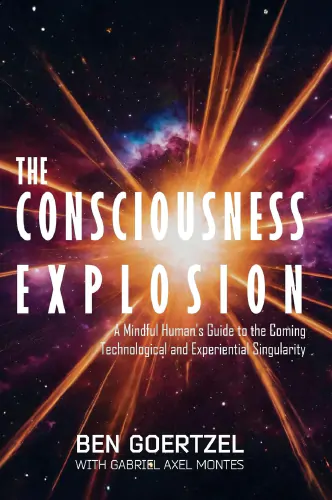
The Consciousness Explosion
A Mindful Human's Guide to the Coming Technological and Experiential Singularity
The pace of engineering and science is speeding up, rapidly leading us toward a technological Singularity—a point in time when superintelligent machines achieve and improve so much so fast, traditional humans can no longer operate at the forefront. However, if all goes well, human beings may still flourish greatly in their own ways in this unprecedented era. If humanity is going to not only survive but prosper as the Singularity unfolds, we will need to understand that the Technological Singularity is an Experiential Singularity as well, and rapidly evolve not only our technology but our level of compassion, ethics and consciousness. Great for curious and open-minded readers who want to wrap their brains around these dramatic emerging changes and empower themselves with tools to adapt and thrive.

The Cybernetic Manifesto
Turchin and Joslyn’s manifesto imagines humanity’s next evolutionary leap: just as cells once united to form complex organisms, they foresee humans merging into “super-beings” through direct neural connections, achieving a form of technological immortality. They argue that evolution’s new frontier isn’t biological, but rather conscious and creative, driven by human will instead of natural selection. While not everyone will choose this path of integration, they suggest it’s those who do who will ultimately explore the cosmos.

The Directions and Conditions of the Future
Teilhard de Chardin envisions human evolution as a purposeful journey guided by three intertwined trends: a natural push toward global unity, technological advances that expand our capabilities, and a deepening of reflective consciousness. Yet, he warns that without a genuine inner cohesion—rooted in love and mutual understanding—these forces may lead to a cold, mechanized future. In his view, our destiny is not random but a guided ascent toward a higher, more meaningful collective awareness.

The Edge Runner
A presentation revolving around the question: what is going on in the universe? Special emphasis is given to the human condition, the accelerating complexification of the cosmos, and options for the human collectivity as it faces the future.

The Evolutionary Importance of Technology
McKenna discusses how rapidly advancing technologies like nanotech, biotech, and the internet are converging and taking on a life of their own, bootstrapping information to higher levels of connectivity. He sees this leading to a virtual world where we can share inner visions and dissolve differences.

The Formation of the Noösphere
A Biological Interpretation of Human History
The noösphere is the sum-total of mental activity which emerges out of a complex biosphere, and in this essay Teilhard describes how our planet is growing its very own mind.
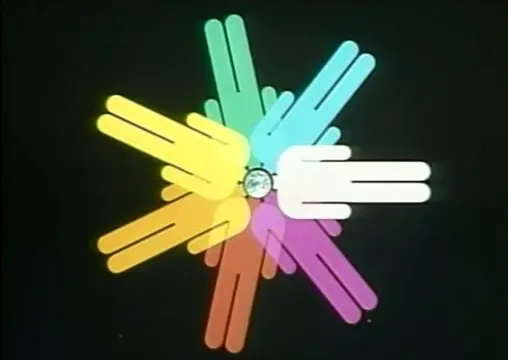
The Global Brain
Peter Russell’s award-winning video explores the idea that the Earth is an integrated, self-regulating living organism, and asks what function humanity might have for this planetary being. It suggests that we stand on the threshold of a major leap in evolution, as significant as the emergence of life itself, and the essence of this leap is inner spiritual evolution. Moreover, Russell maintains that it is only through such a shift in consciousness that we will be able to manage successfully the global crises now facing us.

The Global Brain as a Model of the Future Information Society
The Global Brain paradigm views the emerging global information network connecting humans and technology as a nervous system for Earth's social superorganism. This special issue surveys opportunities and challenges in developing this potentially more intelligent, synergetic system. Contributions explore political, economic, and philosophical aspects, aiming to guide the transition towards a sustainable society empowering diversity.

The Global Brain as a New Utopia
The global brain can be conceived most fundamentally as a higher level of evolution, the way humans form a higher level of organization that evolved out of the animals. Although the analogy between an organism and a society can be applied even to primitive societies, it becomes clearly more applicable as technology develops. As transport and communication become more efficient, different parts of global society become more interdependent. At the same time, the variety of ideas, specializations, and subcultures increases. This simultaneous integration and differentiation creates an increasingly coherent system, functioning at a much higher level of complexity.
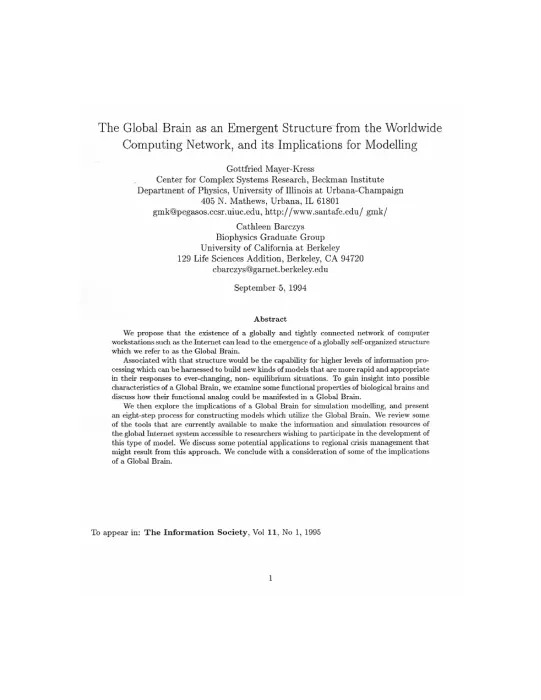
The Global Brain as an Emergent Structure from the Worldwide Computing Network
We propose that the existence of a globally and tightly connected network of computer workstations such as the Internet can lead to the emergence of a globally self-organized structure which we refer to as the Global Brain.
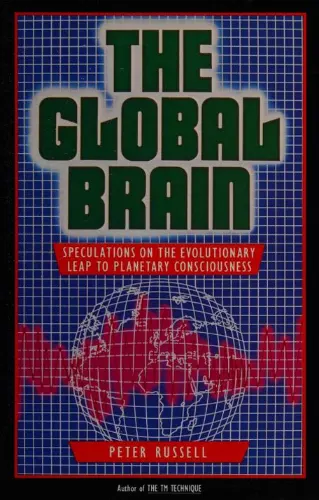
The Global Brain
Speculations on the Evolutionary Leap to Planetary Consciousness
We've seen the power of the internet to connect people around the world in ways never before known. This remarkable book argues that the billions of messages and pieces of information flying back and forth are linking the minds of humanity together into a single, global brain: a brain with astonishing potential for the Earth. Peter Russell weaves together modern technology and ancient mysticism to present a startling vision of the world to come, where humanity is a fully conscious superorganism in an awakening universe. The human potential movement, he shows, is growing fast and influencing business, politics, and medicine.

The Global Superorganism
An Evolutionary-Cybernetic Model of the Emerging Network Society
The organismic view of society is updated by incorporating concepts from cybernetics, evolutionary theory, and complex adaptive systems. Global society can be seen as an autopoietic network of self-producing components, and therefore as a living system or “superorganism”.

The Gnostic Astronaut
Going off the deep end at Shared Visions Bookstore in Berkeley, trailblazer Terence McKenna plunges into freaky psychedelic phenomena that unravel consensual reality. He describes gonzo techniques for sparking glossolalia on 'shrooms—speaking pure alien word salad in an ecstatic state beyond language. McKenna argues these kooky experiences expose the limits of our linguistic operating systems, suggesting our minds are hardwired into a deeper bio-lingo. He ponders far out connections between psychedelics, paranormal events, and alien contact, and emphasizes riding the wave of raw experience over textbook pharmacology in grokking the psychedelic sphere.

The Omega Point as Eschaton
Answers to Pannenberg's Questions for Scientists
Frank Tipler presents an outline of the Omega Point theory, which is a model for an omnipresent, omniscient, omnipotent, evolving, personal God who is both transcendent to spacetime and immanent in it, and who exists necessarily. The model is a falsifiable physical theory, deriving its key concepts not from any religious tradition but from modern physical cosmology and computer science; from scientific materialism rather than revelation. Four testable predictions of the model are given. The theory assumes that thinking is a purely physical process of the brain, and that personality dies with the brain. Nevertheless, he shows that the Omega Point theory suggests a future universal resurrection of the dead very similar to the one predicted in the Judeo-Christian-Islamic tradition. The notions of “grace” and the “beatific vision” appear naturally in the model.
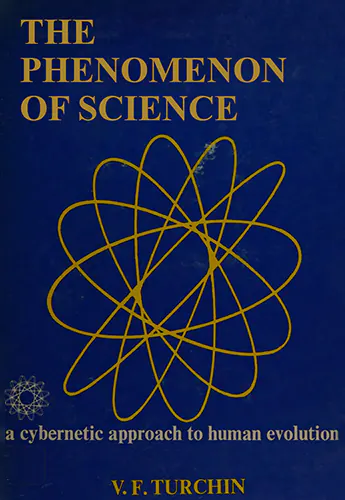
The Phenomenon of Science
A Cybernetic Approach to Human Evolution
Imagine a groundbreaking book that unveils the hidden architecture of intelligence itself. From the humble beginnings of single-cell organisms to the dizzying heights of human culture and science, Valentin Turchin charts the epic journey of cognition. He reveals how each quantum leap in mental prowess—from basic reflexes to abstract reasoning—emerges from a process called “metasystem transitions.” By weaving together cybernetics, evolutionary theory, and the hierarchical nature of mind, Turchin offers a revolutionary perspective on how consciousness evolves. Prepare to see the story of life and thought in an entirely new light.

The Place of Technology in a General Biology of Mankind
Teilhard argues that biology and technology are the same thing: technology is simply advanced biology which has reached a minimum threshold of self-awareness, allowing it to harvest and sheperd energy from its environment and utilize it to intelligently organize matter for further evolutionary development.

The Plot Thickens, the Stakes Rise
McKenna discussed his theory that humanity is accelerating towards a transcendental object at the end of time, propelled by ever-increasing novelty. He argued that the internet and new technologies like virtual reality are expanding consciousness in this trajectory. McKenna was especially excited about the legal psychedelic salvia divinorum, urging people to explore it and other plants as allies toward reaching higher states of awareness before the culmination of cosmic evolution.

The Primacy of Direct Experience
In this, the closing session of a June 1994 workshop, Terence McKenna tells us directly what he thinks this human life is actually about: the primacy of direct experience; a focus on the present-at-hand.

The Social Superorganism and its Global Brain
Society can be viewed as a multicellular organism, with individuals in the role of the cells. The network of communication channels connecting individuals then plays the role of a nervous system for this superorganism, i.e. a “global brain.”

The Third Story of the Universe
Brian Swimme explores the concept of the noosphere.

The Transformation and Continuation in Man of the Mechanism of Evolution
How does humanity fit into evolution's arc? Teilhard de Chardin argues that we represent not an endpoint, but an intensification of evolution's complexity and consciousness. As technology and social bonds grow, he sees not disaster but hope—perhaps mankind is evolving toward an “ultra-hominization,” a perfected global mind.

The Vision of a Better World
Two visionaries, Tom Munnecke and Barbara Marx Hubbard, engage in an uplifting dialogue exploring the emergence of human creativity and consciousness. They trace inspirations from mentors like Jonas Salk, who recognized futuristic possibilities in Hubbard, and Buckminster Fuller, who affirmed humanity's potential. Together they shine light on the crisis of our times as the birth pangs of a new civilization, calling us to connect with the creativity arising globally. Their exchange weaves threads of hope and positivity, envisioning a future where all people actualize their gifts in service of our world.
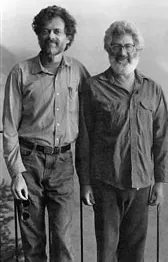
The World Wide Web and the Millennium
Seldom do we have an opportunity to test the accuracy of oracular predictions, but this fascinating conversation between two great thinkers has already proven to be right on target. Speculations include the future evolutionary development of the Internet, whether it is an embryonic intelligence, whether it will merge our minds into a planetary consciousness, or whether it is an alien brain waiting for humanity to cross an evolutionary threshold. Let the bard and the chaos theorist weave an exquisite cybernetic fantasy for you in this evening seminar.

The World and its Double
This workshop, held at the Nature Friends Lodge, revolves around how psychedelics dissolve boundaries, connect us to the transcendental, and reveal the novel realities underlying our perceived mundane existence. Terence explores how shamanic techniques give access to higher dimensions of consciousness, and describes history as an ever-accelerating process approaching an eschatological transformation or singularity.

The World-Wide Web as a Super-Brain
From Metaphor to Model
If society is viewed as a superorganism, communication networks play the role of its brain. This metaphor is developed into a model for the design of a more intelligent global network. The World Wide Web, through its distributed hypermedia architecture, functions as an “associative memory”, which may “learn” by the strengthening of frequently used links. Software agents, exploring the Web through spreading activation, function as problem-solving “thoughts”. Users are integrated into this “super-brain” through direct machine interfaces and the reciprocal exchange of knowledge between individual and Web. (Published in Cybernetics and Systems ’96, p. 917–922.)

Theory of Collective Mind
The human mind harbors wondrous capacities. Beyond understanding individual minds, we can represent unified awareness across souls, feeling strands of consciousness intertwine. As one, we comprehend realities; as one, we hold intentions. Synchronous experiences spin these mental webs, binding our fates and etching shared worlds upon our hearts. Though fragile, such unions nurture cooperation's tender bloom. Let us marvel at this collective mind—a tapestry of perspectives, stronger than its threads. In this oneness we find hope, for it whispers: even in darkness, we need not walk alone.
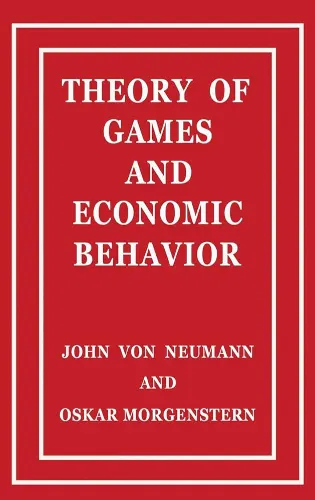
Theory of Games and Economic Behavior
This is the classic work upon which modern-day game theory is based. What began more than sixty years ago as a modest proposal that a mathematician and an economist write a short paper together blossomed, in 1944, when Princeton University Press published Theory of Games and Economic Behavior. In it, John von Neumann and Oskar Morgenstern conceived a groundbreaking mathematical theory of economic and social organization, based on a theory of games of strategy. Not only would this revolutionize economics, but the entirely new field of scientific inquiry it yielded—game theory—has since been widely used to analyze a host of real-world phenomena from arms races to optimal policy choices of presidential candidates, from vaccination policy to major league baseball salary negotiations. And it is today established throughout both the social sciences and a wide range of other sciences.
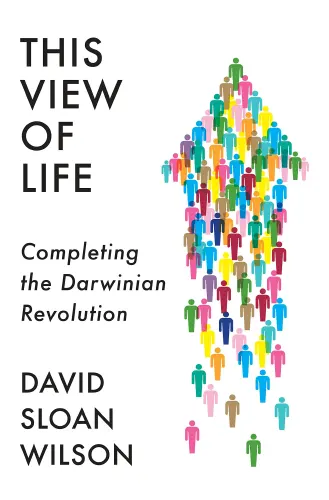
This View of Life
Completing the Darwinian Revolution
It is widely understood that Charles Darwin’s theory of evolution completely revolutionized the study of biology. Yet, according to David Sloan Wilson, the Darwinian revolution won’t be truly complete until it is applied more broadly—to everything associated with the words “human,” “culture,” and “policy.” In a series of engaging and insightful examples—from the breeding of hens to the timing of cataract surgeries to the organization of an automobile plant—Wilson shows how an evolutionary worldview provides a practical tool kit for understanding not only genetic evolution but also the fast-paced changes that are having an impact on our world and ourselves. What emerges is an incredibly empowering argument: If we can become wise managers of evolutionary processes, we can solve the problems of our age at all scales—from the efficacy of our groups to our well-being as individuals to our stewardship of the planet Earth.
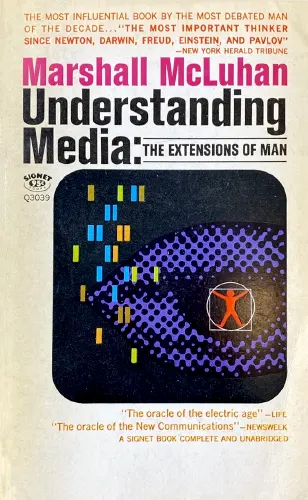
Understanding Media
The Extensions of Man
When first published, Marshall McLuhan’s Understanding Media made history with its radical view of the effects of electronic communications upon man and life in the twentieth century. In Terrence Gordon’s own words, “McLuhan is in full flight already in the introduction, challenging us to plunge with him into what he calls ‘the creative process of knowing.’” Much to the chagrin of his contemporary critics McLuhan’s preference was for a prose style that explored rather than explained. Probes, or aphorisms, were an indispensable tool with which he sought to prompt and prod the reader into an “understanding of how media operate” and to provoke reflection.

Virtual Reality and Electronic Highs
On Becoming Virtual Octopi
Terence discusses virtual reality technology, which allows people to have immersive experiences in digital worlds. He describes the state of VR in the 1990s and speculates on its future implications, both positive and negative. He reflects on how VR could lead to new forms of communication and imagination, but also trivial entertainment. If used thoughtfully, he concludes, VR holds tremendous transformative potential.
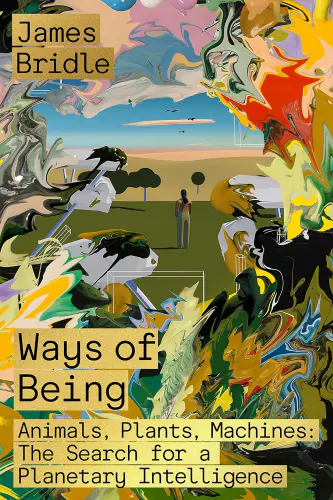
Ways of Being
Animals, Plants, Machines: The Search for a Planetary Intelligence
What does it mean to be intelligent? Is it uniquely human, or shared with other beings—animals, plants, machines? As AI advances, it becomes a strange, even alien force, challenging our place in the world. Meanwhile, other intelligences—natural systems we’ve overlooked—reveal their agency and complexity. In Ways of Being, James Bridle explores these intelligences through biology, physics, and art, urging us to rethink our technologies and societies for a more equitable coexistence with the nonhuman world. Bold and thought-provoking, it’s essential for our survival.
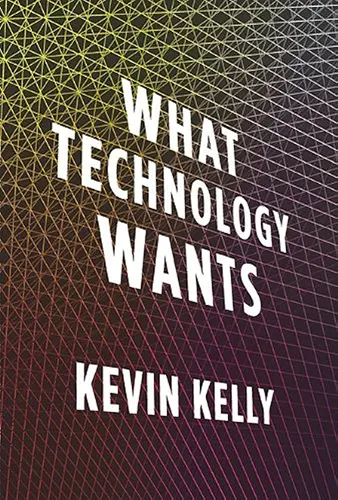
What Technology Wants
One of today's most respected thinkers turns the conversation about technology on its head by viewing technology as a natural system, an extension of biological evolution. By mapping the behavior of life, we paradoxically get a glimpse at where technology is headed—or "what it wants." Kevin Kelly offers a dozen trajectories in the coming decades for this near-living system. And as we align ourselves with technology's agenda, we can capture its colossal potential. This visionary and optimistic book explores how technology gives our lives greater meaning and is a must-read for anyone curious about the future.

What is it Like to be a Group Agent?
The existence of group agents is relatively widely accepted. Examples are corporations, courts, NGOs, and even entire states. But should we also accept that there is such a thing as group consciousness? I give an overview of some of the key issues in this debate and sketch a tentative argument for the view that group agents lack phenomenal consciousness. In developing my argument, I draw on integrated information theory, a much-discussed theory of consciousness. I conclude by pointing out an implication of my argument for the normative status of group agents.

What is the Noosphere?
Planetary Superorganism, Major Evolutionary Transition, and Emergence
Picture Earth evolving a new layer—not of rock or life, but of thought and technology. This “noosphere” is like a planetary brain emerging through our global networks, satellites, and collective intelligence. The paper explores how this mysterious transformation could represent Earth’s next evolutionary leap, potentially leading to planetary consciousness or even contact with other cosmic minds. It’s happening right now, though we’re still figuring out how to guide this planetary metamorphosis.
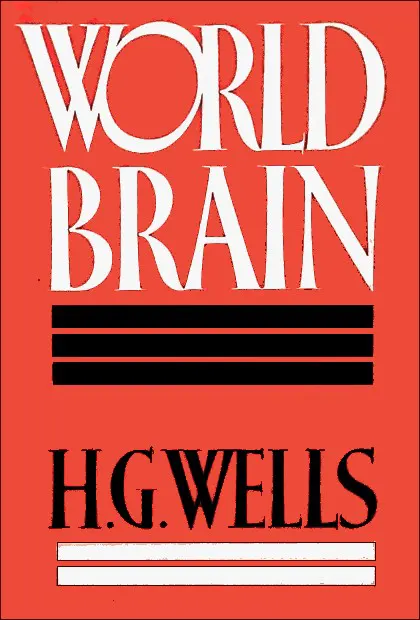
World Brain
World Brain is H. G. Wells' prescient description of something akin to Wikipedia in a collection of essays and addresses dating from the period of 1936 to 1938. Throughout the book, he describes his vision of a new, free, synthetic, decentralized, permanent “World Encyclopædia” that could help world citizens make the best use of universal information resources, arguing that access to such a common interpretation of reality would increase individuals' abilities to make positive contributions to world peace.

World Wide Brain
The Emergence of Global Web Intelligence and How it Will Transform the Human Race
Ben Goertzel says the Internet is evolving towards a “global Web mind”–an emergent, distributed intelligence surpassing human capabilities. This development, grounded in complexity science, could solve AI’s scalability issues and merge humanity with technology. While potentially solving global problems, it raises concerns about individual freedom. Drawing parallels with spiritual concepts like the noösphere and collective unconscious, this evolution is seen as inevitable and transformative. As we nurture this new form of life, we stand at the threshold of a profound shift in human consciousness and global interconnectedness.